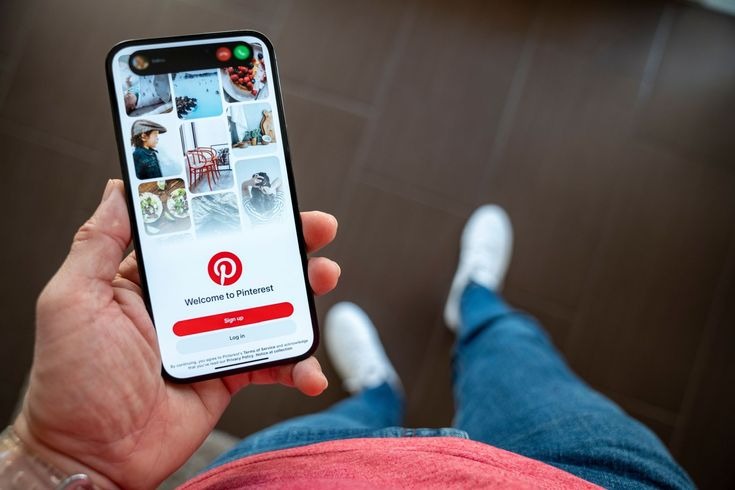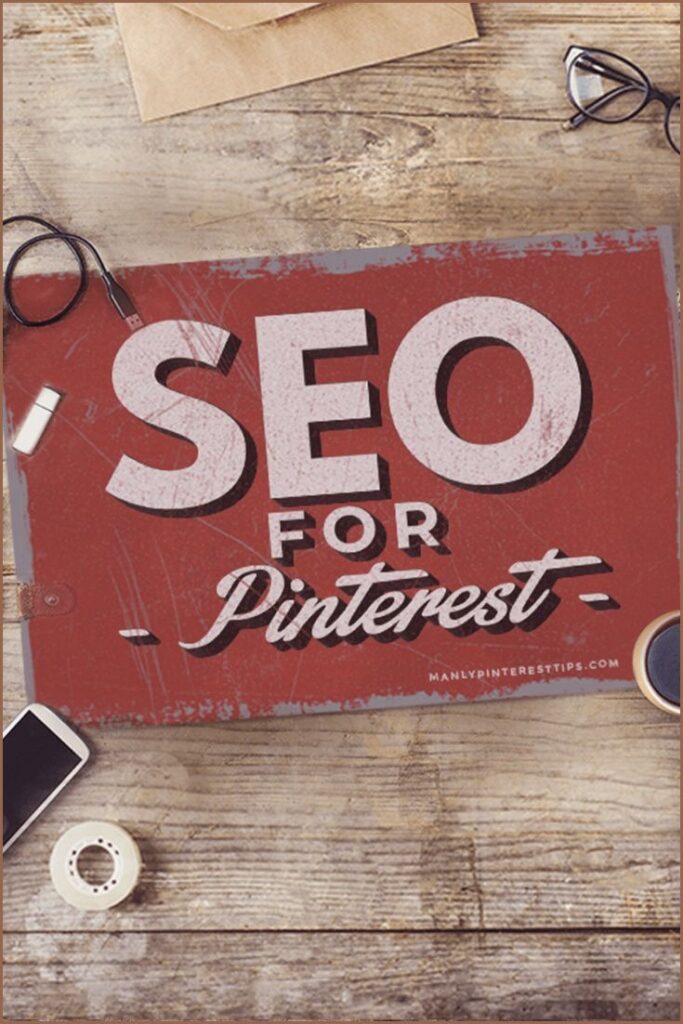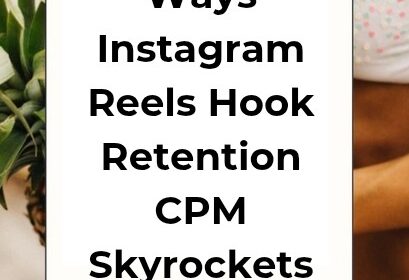Picture this: a platform where people show up already in the mood to discover something new, save it, dream about it, and—if you play your cards right—buy it.
That’s Pinterest in 2025. While everyone else is screaming for attention on platforms built for noise, Pinterest remains the home of intentional browsing, planned purchases, and “I didn’t know I needed this, but wow I do” moments.
For discovery-driven brands, the place is pure gold, and using the right Pinterest ads tactics is how you get found before the competition even realizes the customer was shopping.
If you want to get ahead of the curve and ride the discovery wave where it naturally flows, Pinterest Ads are the engine. And in 2025, they’re even sharper, smarter, and more conversion-hungry than ever.
#1. Align Creative with Intent

In a discovery-driven brand scenario, your creative must reflect not just awareness but the seeds of decision-making.
Many brands still deploy generic image ads; but when you layer intent cues, discovery mindset, and visual context, you get engagement and conversion.
This is where your Pinterest ads tactics should shine.
Pinterest users often arrive with an intent to plan and to act—whether it’s a home renovation, a new wardrobe, or an upcoming event.
For instance, the updated Trends tool on Pinterest shows that their predictive forecasting of what users will search lasts nearly twice as long as on other platforms.
That means if your creative is aligned with “what users are planning next”, you capture momentum, not lag.
How to apply:
#1. Use vertical visuals (recommendation: 2:3 aspect ratio, e.g., 1000×1500 px) because mobile dominates.
#2. Include overlay text or early branding cues that speak to the user’s journey (“Complete your home makeover this weekend”, “Outfit ready for fall launch”).
#3. Craft descriptions and headlines rich in relevant keywords (both search & intent) so your Pins feed the algorithm and index well.
#4. Ensure your visual story matches the phase of the funnel: discovery → interest → action. For example, an aspirational lifestyle shot followed by a “Shop the look” link in a carousel or collection ad.
By integrating these creative approaches, your Pinterest ads tactics evolve from “we’re here” to “we’re me and we’re ready for you”.
#2. Leverage Targeting Layers
One of the most under-used Pinterest ads tactics among brands focused on awareness is weak targeting.
In 2025, the smartest brands layer keywords, interests, and behavioral signals to meet users who are already in a “discovery-turned-purchase” mindset.
According to recent research, targeting on Pinterest has matured: you’re no longer just choosing broad audiences, but layering “interest + keyword” to find users actively searching and those browsing related topics.
For your discovery-driven brand, this means you’re intercepting users at a sweet spot: they’re open, curious, and considerate.
How to apply:
#1. Identify high-intent keywords within Pinterest search (e.g., “minimalist living room makeover”, “sustainable activewear launch 2025”).
#2. Layer those keywords with interest categories (e.g., “home décor enthusiasts”, “eco-fashion shoppers”) to refine the audience.
#3. Use behavior signals where available (catalog visitors, past engagers) to build retargeting or exclude low-intent users.
#4. Use negative keywords and exclusion lists to avoid broad, low-intent segments that inflate cost without conversion.
When you combine layering with the right creative, you maximize your Pinterest ads tactics: you reach both active searchers and engaged planners.
#3. Use Higher-Intent Ad Formats
A vital set of Pinterest ads tactics for discovery-driven brands is selecting formats that don’t just show you exist—they get users to act.
In 2025, Pinterest evolved beyond standard Promoted Pins and introduced a range of formats geared for conversion.
Examples include:
#1. Idea Ads: visually rich, multi-scene storytelling with clickable links.
#2. Shopping/Catalog Ads: sync your product feed for dynamic placements.
#3. Collection or Carousel Ads: display multiple items or tell a narrative around your brand’s offering.
How to apply:
#1. For a brand launching a new collection, use a Shopping Ad linked to your catalog. Pinterest itself reveals that uploading your full catalog increases visibility in relevant feeds.
#2. For a brand story (say, “discovery-driven brands” exploring a journey), use Idea Ads to tell the narrative: the coin-like metaphor of discovery, if you will—without the metaphor-language.
#3. Prioritize ad formats that support action: “Shop Now”, “Learn More”, “Explore Collection”.
Adopting these stronger formats moves your Pinterest ads tactics from “mere exposure” to “intent-driven conversion”.
That’s especially crucial when you’re investing money and need measurable outcomes.
#4. Optimize for SEO Within Pinterest
Even though Pinterest is image-first, search and SEO matter.
One of the more overlooked Pinterest ads tactics is optimization of the Pin content itself—title, description, board placement—all play into indexation and discoverability.
As one source put it: “Pinterest may be a visual platform, but SEO is massively important too.”
For discovery-driven brands, aligning with keywords and context ensures you’re visible before the user makes up their mind.

How to apply:
#1. Use your focus keyword (for example “Pinterest ads tactics”) in the Pin title and description, naturally.
#2. Add related semantic keywords—“Pinterest advertising strategy”, “Pinterest marketing tips 2025”, “visual discovery ads” etc.—to improve content breadth.
#3. Create boards aligned with your campaign themes and add your Pins there so the algorithm can surface them in the right feed.
#4. Tag your product Pins or idea Pins using relevant keywords, and ensure your website’s metadata aligns with what appears on Pinterest.
By combining traditional SEO logic with the visual context of Pinterest, you amplify your Pinterest ads tactics in a way many brands ignore.
#5. Sync Your Catalog & Automate Performance
Scaling your Pinterest ads tactics means shifting from manual one-off campaigns to automated, efficient workflows.
In 2025, Pinterest rolled out updates (via its Performance+ tools) that help with conversion bidding, catalog feeds, and inventory sync.
For discovery-driven brands growing from niche to scale, this operational muscle is vital.
How to apply:
#1. Connect your product catalog (in Shopify, BigCommerce or similar) to Pinterest so shopping placements update dynamically. Pinterest recommends this for maximizing reach.
#2. Use automated bidding (ROAS bids, conversion bids) instead of manual CPC to let the algorithm optimize for your most valuable actions.
#3. Establish rules to refresh creative frequently (e.g., rotate fresh Pins every 1-2 weeks) because stale creative reduces performance.
#4. Monitor performance metrics and scale what works—don’t treat each campaign as isolated but feed insights into your next cycle.
When your system is tuned for performance, your Pinterest ads tactics shift from experimentation to reliable growth.
You free up mental bandwidth to focus on strategy rather than execution.
#6. Retarget and Cross-Channel Integrate
A common mistake in Pinterest ads tactics is treating campaigns as standalone.
For discovery-driven brands, the platform is often the beginning of the journey, not the end. To get full value, you must retarget and integrate across channels.
Consider this: A user sees your Pin, saves it, visits your site, then later you retarget them on other platforms or via email.
Pinterest can feed that progression. Research shows users on Pinterest are open to ads and often in shopping mode: one study found 85% of weekly users made a purchase from Pins.
That means your retargeting and cross-channel logic must be baked in.
How to apply:
#1. Use Pinterest’s conversion tracking or tag to capture visitors from your ad to your site or checkout.
#2. Build retargeting audiences from those who engaged with your Pins (saved, clicked) but didn’t convert.
#3. Align messaging across other channels (e.g., Instagram, email) referencing the Pinterest visual and reinforcing the brand story.
#4. If you run campaigns elsewhere (“Google Search Ads”, “Facebook Ads”), coordinate timing so the user sees a consistent narrative as they move from discovery to decision.
By bridging discovery-first activity on Pinterest with retargeting and cross-channel reinforcement, your brand’s cadence becomes cohesive—not fragmented.
That’s how Pinterest ads tactics evolve into full-funnel strategy.
#7. Measure, Iterate, and Optimize

Finally, no set of Pinterest ads tactics is complete without measurement and iteration.
A discovery-driven brand must validate that: “Yes, the users I reach are converting; and yes, the visual discovery behaviour turns into traffic and sales.”
According to various industry insights, ads on Pinterest often cost less per conversion and the audience is more receptive.
How to apply:
#1. Define key metrics: click-through rate (CTR), cost per conversion (CPA), return on ad spend (ROAS), and lifetime value of customers originating from Pinterest.
#2. Use Pinterest’s analytics and your own tracking (UTM parameters, GA4) to attribute properly.
#3. Test one variable at a time: creative, copy, targeting, ad format. For instance, run an Idea Ad versus a standard promoted Pin to see which drives lower CPA.
#4. Pause or iterate campaigns where CPA exceeds target or ROAS falls short. Scale campaigns where performance exceeds baseline.
#5. Document learnings and build a library of high-performing Pins and concepts.
For a discovery-driven brand, this means you’re not starting each campaign from scratch—you’re refining what you know works.
Optimizing in this way ensures your Pinterest ads tactics remain sharp, relevant, and cost-efficient.
Conclusion
If your brand wants to harness the full potential of Pinterest in 2025, you’ll need to go beyond random Pins and generic ads.
Start by picking one or two tactics you haven’t yet fully explored (maybe Idea Ads or catalog sync). Then iteratively build and refine.
The platform’s users are ready, the intent is there, and the tools are evolving fast. Your job: meet them where they’re planning their next move—and make it yours.
In the world of discovery, being found isn’t enough. Being chosen is. Let your Pinterest ads tactics do the heavy lifting.










